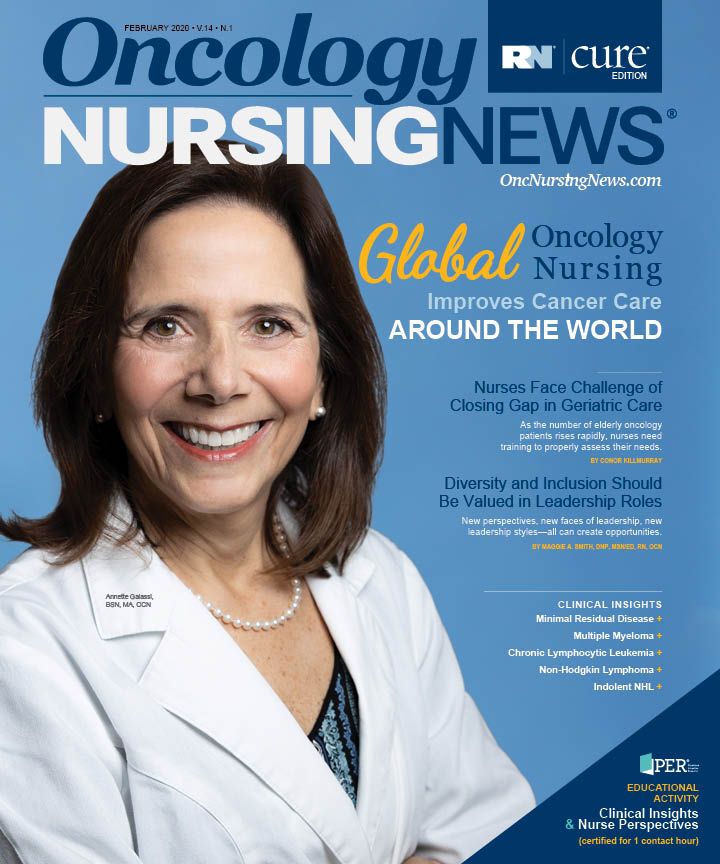Nurses Face Challenge of Closing Gap in Geriatric Care
As the number of elderly oncology patients rises rapidly, nurses need training to properly assess their needs.
Cancer is a widespread disease that affects every population, yet none more so than the elderly. This patient population is growing at a pace that is overburdening cancer centers, and the duty of filling the gap created between aging patients and their care team is falling on oncology nurses.
Although there already is a shortage of nurses, even fewer are geriatric certified, making these training programs vital to the future of the oncology nursing field.
THE SILVER TSUNAMI
To understand the full scope of the care gap nurses are faced with bridging, it’s important to understand the phrase the “Silver Tsunami.” This nickname refers to the rising tide of the aging population flooding the healthcare system. On average, 10,000 Americans turn 65 each day, and 53.4% of all new cases of cancer involve patients 65 and up, with a median diagnosis age of 66, according to the National Cancer Institute’s Surveillance, Epidemiology, and End Results (SEER) Program 2019 statistics.1
“The last of those baby boomers, those born between 1946 and 1964, will be turning 65 in 2030. And the estimate is [that] 1 in 5 of these baby boomers will be over 65 in 2030, so that’s a big group of people coming into the healthcare system in 2030,” explained Carolina Uranga, MSN, BSN, RN, AGCN-BC, OCN, WCC, ONS, in an interview with Oncology Nursing News®. However, healthcare has long known that the silver tsunami would crest in 2030.
Uranga, a clinical nurse specialist at City of Hope in Los Angeles, California, added that the majority of patients that nurses will see in a cancer clinic are elderly adults, and although 2030 feels far away, the gap in care is happening now and colliding with the current oncology nursing shortage.
“According to Dr Buerhaus in his article ‘Four Challenges Facing the Nursing Workforce in the United States,’ the acceleration of nurses retiring is estimated to be 1 million by 2030,” and this will create a brain drain in the healthcare system,” Uranga said.2 “Suffice to say, we aren’t graduating enough nurses also to keep up with the estimated demand. It’s really a vicious cycle because we don’t have enough nursing professors to provide the education, so we really can’t graduate enough nurses to keep up with the demand.”
Uranga pointed out that although less than 1% of nurses are geriatric certified, more schools are adding geriatric training to their programs, allowing all specialties within oncology to get the training they need to properly assess elderly patients.
EVALUATING GERIATRIC PATIENTS
A patient is considered geriatric at 65 because at this age, Social Security and Medicare benefits kick in, but this chronological age does not always equate to a patient’s functional age, according to Uranga.
At the 37th Annual Chemotherapy Foundation Symposium (CFS®), hosted by Physicians’ Education Resource®, Uranga presented on a geriatric training and assessment program done through City of Hope that recently received Cancer Research Education Grants Program (R25) support for a funding effort that her and her colleagues were spearheading.3
One of the program’s pillars involves educating nurses to understand that age 65 does not have to be a medical cutoff for treatments and that patients younger than 65 may function worse than someone older. Each patient is different, with a different cancer, so the care they need will be unique.
“Maybe [with a] patient you thought you couldn’t be aggressive with, you do a geriatric assessment…and find that this patient can tolerate an aggressive treatment versus decreasing the dose,” Uranga explained during her presentation. “Some older patients can do a lot more and are very active, so assessing the fitness of the older adult versus their frailty will go a long way in making those decisions.”
This approach to personalized care for geriatric patients has also changed the oncology nurse’s role at the bedside. In an interview with Oncology Nursing News®, Paola Bueno, RN, a clinical nurse at City of Hope and a participant in the R25 grant program, discussed how she approaches geriatric patients. “We perform some assessments that help determine any age-related sensory changes that patients might have, such as auditory [or] visual, or limitations on mobility,” she said.
Implementing these tests has led to a better workflow, Buneo said, because it gives the care team a validated tool that can help create personalized care plans prior to undergoing the rigors of cancer treatment. These assessments are often not time-consuming and are simple for the patient to use. For example, the Timed Up & Go assessment takes 3 minutes or less, and nurses need just a chair, a stopwatch, and 10 feet of space. The nurse times the patient walking 10 feet from the chair and back; according to the certified test, 12 seconds or more indicates a risk of falls and also gives the nurse the chance to observe the patient’s gait and consider how adverse effects from treatment might affect mobility.3
Ultimately, Uranga and Bueno hope that a better understanding of what it takes to help a geriatric patient will lead to more positive outcomes as oncology nurses bear the brunt of the Silver Tsunami.
Innovative Program Reduces Nurse Turnover and Fosters Development
Published: September 12th 2024 | Updated: September 12th 2024The US Oncology Network (The Network) has developed one of the most comprehensive programs in the nation to support the professional development and retention of new oncology nurses.




